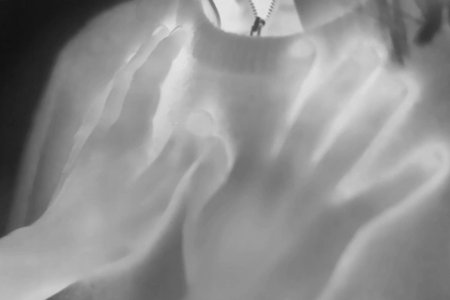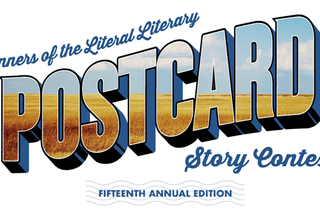
We visited Skopje, the capital of Macedonia, which is famous for its rampant urban renewal program. Since 2010, Skopje has been transforming its downtown centre into an homage to Macedonian history. In the past five years, Skopje has torn down communist era buildings and built twenty faux classical buildings and forty monuments (although it seems like more).
In Macedonia Square, the city’s main square, sits an enormous fountain, at the base of which stand six or more larger than life sized lions, facing Macedonian soldiers standing guard, and roaring gouts of water up toward a statue of a warrior on a horse (Alexander the Great, though that’s not always acknowledged). At night the fountain is lit by changing lights, all timed to accompany the stirring musical selections—Wagner’s Flight of the Valkyrie, romantic Macedonian ballads, others—blasted throughout the square from state of the art loudspeakers.
Statues of great men—revolutionaries, leaders—are deposited throughout the square, some looking down from fountains, others lounging on bridges, still others standing high above, along the tops of the faux colonnades. Leading up to the square, statues of great men stand around a rather expensively wrought bronze table, presumably discussing matters of great import. And inexplicably, there are at least three pirate ships grounded in the river that runs through the city. (Inexplicable, as Macedonia is a landlocked country.)
The urban renewal is ambitious, and it is hard not to ridicule the effect. I have heard that it has cost more than 600 million Euros to date, which is a lot for a small, poor country. It is not only the scale of the undertaking that leaves you feeling a little breathless, but the execution too: many of the sculptures are poorly rendered. Ask any artist who has been to Skopje about the sculptures and they will roll their eyes and say, the heads are too big. Normally, the human form is seven-and-a-half heads tall: the sculptures in Skopje are five and sometimes fewer heads tall. As one Bulgarian friend said, “they are all like children. Huge bronze children.” And all of them are male children.
In Skopje, we stayed at a hostel run by the sister of a Macedonian artist we know. Both our friend and her sister were born in Macedonia, but had spent some time living in the US. The sister running the hostel, which was once the family home, had moved back a few years ago, after her father died. I asked her what Macedonians felt about their city square. She pointed to a fountain her father had installed in the yard. The fountain is an elaborate construction: it is six feet deep and lined with yellow tile. It is bracketed by two one-and-a-half foot tall lions, and in the centre, a cupid stands on a pedestal.
She said that her dad wanted to build this fountain. The family had tried to talk him out of it. He wasn’t an artist and he had no artistic training, and neither did the guy he hired to build the fountain. And, she said, even if he had found an actual artist to build the fountain, he probably wouldn’t have appreciated it, but he liked the fountain he ended up building.
Lake Ohrid borders Macedonia and Albania. Ohrid is 300 metres deep and over three million years old and it is a UNESCO world heritage site. It has been the holiday destination for Macedonians for centuries. Stilt lake houses along the shore were some of the first human settlements ever built, later the Romans took over the town and built an amphitheater and then King Samuel of Bulgaria perched a medieval fortress on top of a hill overlooking the lake. And on a secluded and high security bluff just outside of town, Tito’s summer palace—now a hotel—still peeks out through the trees.
We were in Orhid during the Summer Cultural Festival, and we managed to catch the National Macedonian Ladies Choir singing in an ancient Basilica. In the thronging crowd in the promenade outside the church was another choir, the conductor beating the time to the folk songs. Earlier that night a group of Turkish people in traditional dress waving Turkish flags approached the Turkish quarter chanting: “Turkey. Turkey. Turkey.”
In the Sofia Gallery there is a show of works by Bulgarian women artists from the late 1800s to mid-1950s. There are several artists in the collection, the main being Vaska Emanouilova. She was the lead artist on the Monument of the Soviet Army in Sofia, and she built the centerpiece of the monument, which depicts a woman standing victorious alongside her male comrades.
The monument, a fine example of socialist realism, has been the subject of much debate in Bulgaria. Many of the people of Sofia want the sculpture removed. The monument has been frequently vandalized. Some of the figures have been painted to resemble American superheroes or, most recently, the soldiers were painted in the colours of the Ukrainian flag. I have been told that the Russian Embassy has recently hired a security guard to protect the monument.
In Skopje, the new sculptures produced during the urban renewal lack the skill and passion that Emanouilova brought to the Soviet Army monument. But more glaringly obvious is how few women are depicted in the sculptures of Skopje: not even Mother Theresa, who was born in Skopje, gets a statue. We could only find four female figures, all either pregnant or breastfeeding, and presumably only present in the square because they gave birth to the great men of Macedonia.
We got a little lost in our wanderings in Skopje, and eventually came across a tiny display of pictures taped up in a window that was in the back of the square. The show consisted of poorly copied pictures from Skopje’s World War Two archives. The pictures show men and women working together during the war. There were some field pictures: shots of people posed around tanks and ambulances. There were also formal headshots and lists of honours. There were as many women in these pictures as men. The women were obviously a central part of the Macedonian war effort, and maybe these women were mothers and maybe they weren’t, but they obviously played an important role in Macedonia’s history—just one that hasn’t been cast in bronze.
In Bulgaria, we talk a lot about politics. We do this in Canada too but here, of course, it is different. There are some very serious problems in Bulgaria: there is a lot of poverty and corruption. One night a friend described Bulgaria as a failed state. He cited numerous instances of corruption. The state apparatus is so broken, and the laws are so complex and change so frequently that nobody really understands the rules, so many people take short cuts by paying bribes to get things done. His argument was that nobody is looking after the interests of the state when they take bribes. They are only looking out for themselves.
Later in Macedonia we talked about this idea of the “failed state” with our Macedonian host. She said, “A failed state. Who is the state, if not the people? If the state is failing, it is us who have failed.” As she said this I immediately agreed with her and thought about the upcoming federal election in Canada. But later I wondered if this was my Canadian perspective on agency, because many of our Bulgarian friends do not feel that they are part of the state or the government that represents the state. They do not feel like they have a voice.
All photos by My Name is Scot.






